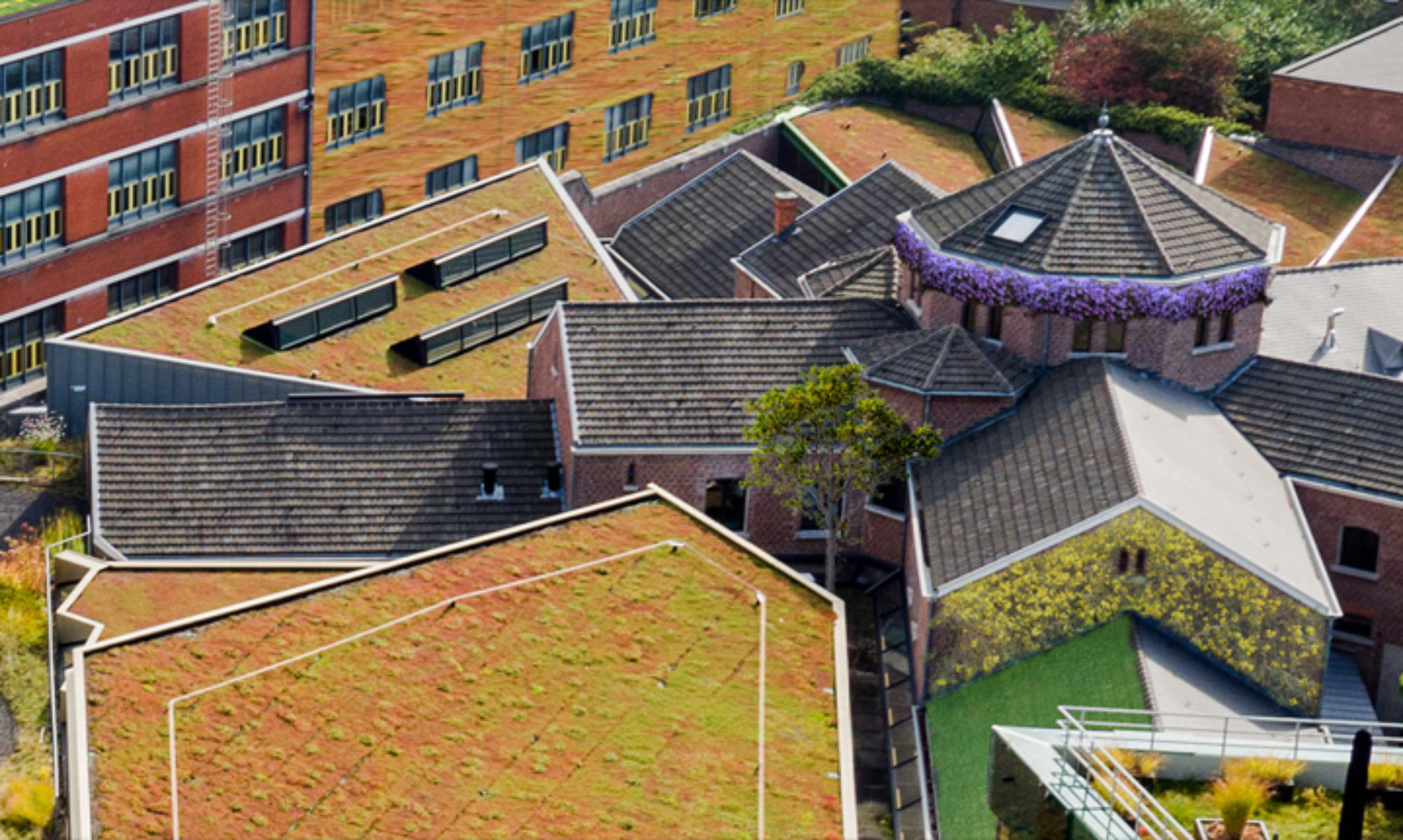Ishi Buffam is an Ecosystem Ecologist, with a PhD in Forest Ecology from the Swedish University of Agricultural Sciences (SLU). His training is in aquatic chemistry and biogeochemistry, with a primary focus on carbon and nitrogen transformations and hydrological transport within watersheds and stream networks. He has designed and taught courses in Ecosystem Ecology, Aquatic Ecology, Stream Ecosystems, Water Resources, and Global Change. Currently at SLU he teaches in courses on Climate Change and Challenges of the City. His group’s current research projects involve: climate change and freshwater ecosystem carbon cycling, biogeochemistry of urban aquatic ecosystems, and ecosystem services provided by urban green spaces. Many of their current projects are centered around quantifying ecosystem services and potential disservices associated with green (vegetated) roofs. Green roofs are known to intercept and reduce runoff during rain events, to reduce the urban heat island effect, and to function as good insulators thus saving heating/cooling energy. But, little is known about the direct biogeochemical functions of green roofs, for example: What capacity do green roofs have for carbon sequestration, nutrient retention, or greenhouse gas exchange? Or, do they function as a source of nutrients and greenhouse gases, and if so – how can they be designed to minimize these dis-services? And, what are the key climate, geophysical, and biological factors that control nutrient cycling in these novel urban ecosystems?

1. How can you relate your work activities to urban greening?
My work involves carrying out research projects on nutrient and carbon cycling in green roofs, with a focus on how (and why) green roofs perform as a source or a sink for carbon, nitrogen and phosphorus. I also teach on these topics as well as more broadly on ecosystem ecology and climate change adaptation. Together with the students in my group and our colleagues, we study how the dynamic behavior of these elements depends on the characteristics of a given roof like the plant community, substrate depth or organic matter content; the management of the ecosystem – for instance whether it is fertilized or not; and the local climate. Our group has pursued questions like “How do the nutrient losses in green roof runoff change with the season, or size of rain events?”, “How does biochar mixed into green roof substrate influence the runoff water quality?”, and “Do green roofs with more diverse plant communities retain more nitrogen?” One of the most interesting aspects to study is how these ecosystems change as they age, since many green roofs are built to last 60 years or more. My interest in green roofs was inspired by a tour that I took at the Civic Garden Center of Greater Cincinnati, about 10 years ago. With a background in watershed hydrology, ecosystem ecology and stream biogeochemistry, I could see that green roofs could be studied as relatively simple ecosystems which are also mini-watersheds – that is, we can tell a lot about the ecosystem by studying the chemistry and flow of the water leaving the downspout, taking lessons from the rich history of research on forested watersheds and their streams. Green roofs also struck me as a clever use of “already-taken” space which could provide needed functions in cities – what a cool idea!
2. What do you think are the key factors for a good human-nature relationship? How can urban greening contribute as much as possible to this?
In order to form a good relationship with nature, people need to be given the opportunity to experience nature. Personally, I find it rejuvenating to be able to get “lost” in nature in order to feel strongly connected, and for this I think that larger areas (and for me, larger plants – like trees) can be important. From that perspective, urban greening efforts should include preservation of accessible larger vegetated areas in and near cities like urban parks, forests, and meadows. But, smaller-scale Nature-based solutions like green roofs and walls also provide a window of exposure to nature. Green roofs and walls are an
interesting example because it may be a bit shocking or surprising for people to see greenery on buildings (though becoming less so as people get used to it). This shock can lead people to think more critically about what kind of green spaces are needed for a healthy and giving environment; and about human impacts on the ground-level natural environment. And, even on a small scale, just seeing a bee buzzing around a flower, feeling the cool air flowing off of a lush plant community on a warm day, catching the scent of wild thyme in the air – all of these can spark an appreciation and connection with nature, and all of these can be experienced from green roofs or walls of the right design and placement.
3. In which aspects would you like to see change in this in the short and long term?
Urban greening in general is crucial for maintaining a healthy and pleasant environment and high quality of life for people, as well as preserving some environmental protections and habitat for local ecosystems. By urban greening in general, I mean a full, connected and diverse urban green infrastructure including parks, natural forested areas and wetlands, streams and lakes, street trees, gardens and so on as well as “living architecture” like green roofs and walls. I am very wary of seeing green roofs and walls as a replacement for ground-level vegetation, or as a replacement for more “natural” natural areas like forests, meadows, streams, lakes, or wetlands. Instead, living architecture should be seen as a positive and creative use of space in the built environment to reintroduce vegetation where available space on the ground is limited.
In the future, I would like to see prioritization by urban municipalities of urban green infrastructure both large scale and small, and importantly, as part of a planning effort which cuts across different disciplines and offices/agencies at the municipality, and which includes input from local residents. Many cities are already moving in this direction.
4. What advantages do green roofs and facades offer compared to other Nature Based Solutions in cities like parks or urban gardens?
The main advantage of living architecture is that it uses existing space in the built environment that is already performing another function, and turns that into multifunctional green space. Thus, every service provided by green roofs and walls can be seen as a bonus, relative to the same building without the added vegetation. Green roofs and walls can provide some of the same functions as on-the-ground green spaces like parks or gardens – for instance, one can grow vegetables on a green roof – though this will require thick substrate, irrigation and fertilization – and one can enjoy the aesthetics and appreciate the cooling effect of a green wall. Living architecture provides a way to have a green environment even in dense urban settings, which is where greenery is most urgently needed by people.
5. Which ecosystem service affects your field of work the most and how do you see the future?
Municipalities have a lot of interest in cutting down on carbon emissions, and on sequestering carbon, in order to help combat climate change – thus there is naturally interest in the carbon sequestration potential of green roofs. Like any ecosystem, green roofs have the potential to sequester some carbon if the mass of plant and soil organic matter increase over time. However, this potential is small relative to that of ground-level ecosystems like forests or grasslands, and also small relative to the energy cost of constructing the roof, or the carbon and energy savings from larger-scale urban planning decisions like designing compact cities which promote walking, bicycling and public transit. Instead, I would emphasize other locally-needed ecosystem services that green roofs can certainly help with: stormwater runoff retention, reduction of nitrogen in runoff, improved air quality by binding airborne particles and NOx, local cooling, insulation of the building, and beauty. Green roofs can also provide habitat for local animals including birds and pollinating insects (we’ve also seen opossums and other unwanted “critters” up on some of our closer-to-ground-level green roofs!).
In the future, I see urban greenery, including green roofs, playing a more and more important role in helping city dwellers maintain a healthy, quality life in the face of increasing urbanization, densification, and climate change. Local climate adaptation will be critical. Urban greenery is important both for its impact on the regional climate – for instance, providing connected vegetated corridors for large-scale movements of air flow into and through cities; and for effects at the local/micro scale – for instance, providing shading under a tree. Thus we need to consider both individual small-scale Nature-based solutions, and how all these fit together and connect at a larger spatial scale. For climate adaptation, the local water cycle is another key. Cities need urban vegetation and soils that can help to capture water, retain the water in place and allow it to infiltrate and/or evaporate (or transpire via plants) rather than being shunted away as stormwater runoff. Evapotranspiration cools the air, and infiltration helps maintain soil moisture and groundwater levels. Green roofs and walls can’t provide all that is needed, but they can contribute – every square meter of space should be seen for its potential to help with these challenges.
